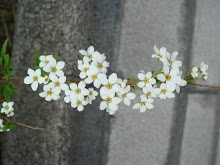I think most of the schools that teach Japanese do not teach you all the conjugation when you first start... except one of those few like the one that I attended. I thought that it is good to learn the basic conjugation first so that it will be easier for you to get the right conjugation for the grammar... what do i mean by conjugation?
Each verb has the following basic conjugations in Japanese:
Negative (polite) form *
Negative (impolite) form *
Dictionary form - this is the impolite positive form *
Masu ますform - this is the polite positive form *
Conditional form
Volitional form
Te (て) form
Ta (た) form (this is one of the past tense form)
* those will have past tense to it as well
Well, confusing right? But you will get used to it when you start learning it... So each verb will have the above conjugations. These conjugations will be used in the Japanese grammar.
Of course, there are other forms like potential, passive and causative to add to the confusion!! ;0)
And there are 2 types of verbs:
(a) 他動詞 (たどうし)
(b) 自動詞 (じどうし)
(a) verbs that needs to be accompanied by a subject/object
(b) verbs that doesn't need to be accompanied by a subject/object
A good example will be:
(a) I opened the door. (this will use verb in group a)
(b) The door opened. (this will use verb in group b)
More confusion!! ;0) ... I am still figuring out the difference... hahah..
Wednesday, May 12, 2010
Subscribe to:
Post Comments (Atom)

No comments:
Post a Comment